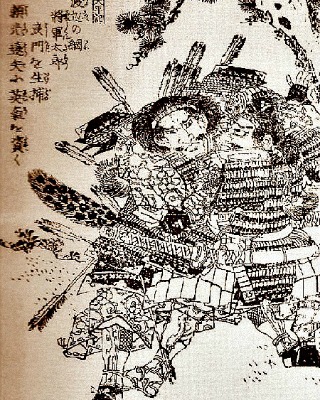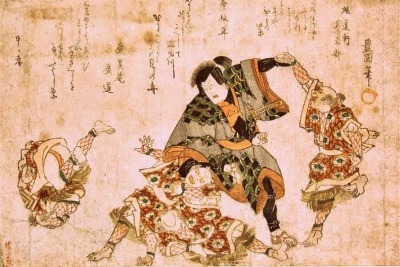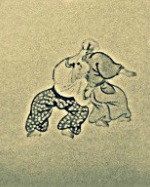The History of Jujitsu
What is Jujitsu?
Although Japanese jujitsu does employ some weapons, its main focus is as a type of unarmed combat.
Jujitsu techniques come in a variety of forms including throws, joint locks, chocking techniques, grappling moves along with kicks, punches and strikes with the elbows and knees.
Jujitsu techniques come in a variety of forms including throws, joint locks, chocking techniques, grappling moves along with kicks, punches and strikes with the elbows and knees.
Talk the Talk
When the name of a martial art ends with jitsu, as with jujitsu, it denotes a style of fighting whereas when it ends with do such as judo and aikido (both of which were derived from jujitsu), it means the system is classed as a way of life.
 The art of jujitsu (also known as jiu-jitsu, ju-jutsu, tai-jutsu, yawara and yawara-ge) has its roots in feudal Japan and is based on the principle that the soft conquers the hard. It was developed alongside other disciplines such as archery and swordsmanship and was a way a samurai warrior could defend himself against an opponent with a weapon in full armour, even if he himself was disarmed.
The art of jujitsu (also known as jiu-jitsu, ju-jutsu, tai-jutsu, yawara and yawara-ge) has its roots in feudal Japan and is based on the principle that the soft conquers the hard. It was developed alongside other disciplines such as archery and swordsmanship and was a way a samurai warrior could defend himself against an opponent with a weapon in full armour, even if he himself was disarmed.The Development of Jujitsu
The first recognised school (Ryu) that taught only jujitsu moves opened in 1532, founded by Master Takenouchi Hisamori. The Takenouchi-Ryu taught the art of seizing (Kogusoku) and though it was different from the style as it is taught today, it is usually considered to be the foundation of the modern art.The art of jujitsu developed further from the seventeenth century when many samurai warriors were no longer able to make an income from war as the country had begun a period of prolonged civil rest, known as the Edo Period (1603 – 1868).
Swords and other weapons such as bows and arrows were banned for all but the samurai so martial arts schools that taught unarmed combat techniques grew in popularity throughout the period. Chin Genpin, a priest from China who emigrated to Japan, was an important figure in the history of jujitsu. He began teaching kicking and striking techniques derived from kung fu at the Kokushij Temple in Tokyo, where amongst his students were three ronin (masterless samurai), Fukuno Schichiroemon, Yoshin Miura and Isogai, all of whom founded their own schools. Jujitsu developed into a more systematic art form under these and other masters during this time and at the height of early jujitsu practice, the country had over seven hundred ryu.
In the early twentieth century, the world of jujitsu split when many of the schools merged with the new martial art, judo (the gentle way), created by Jigoro Kano. Judo took many of the less dangerous jujitsu moves and was adapted for a more modern way of fighting, with greater emphasis on the sport and exercise elements of the martial arts. Around the same time, Morihei Ueshiba created the art of aikido (the way of harmonious spirit), basing his new system on a different set of jujitsu techniques, in particular the wrist and arm locks.
Under the American occupation of Japan after the Second World War, many styles of fighting were again banned because of their potential link with militarism. This lasted until 1951 when the occupation ended and the art of jujitsu began to flourish once more in its country of origin, as well as in a number of other countries around the world.
A History of Jitsu. [Internet]. 2013. The University of Bristol. Available from: http://www.bris.ac.uk/Depts/Union/JuJitsu/history.htm [Accessed August 24, 2013].
Helm, D. [Internet]. 2010. The rise and fall of Jujitsu before the Imperial Ordinance of 1871. The United States Ju-Jitsu Federation. Available from http://www.usjujitsu.net/articles/jujitsup1.htm [Accessed August 25, 2013].
Jujitsu History in the Modern Era
From 1868, power shifted in Japan from the shogun to the emperor in what became known as the Meiji Restoration and an Imperial ordinance from 1871 meant that many aspects of samurai culture were banned, including the practice of martial arts. The few masters that continued the teaching of jujitsu during the latter half of the nineteenth century either moved away from the country or were forced to train in secret, passing their knowledge on to a single or select group of trusted students.In the early twentieth century, the world of jujitsu split when many of the schools merged with the new martial art, judo (the gentle way), created by Jigoro Kano. Judo took many of the less dangerous jujitsu moves and was adapted for a more modern way of fighting, with greater emphasis on the sport and exercise elements of the martial arts. Around the same time, Morihei Ueshiba created the art of aikido (the way of harmonious spirit), basing his new system on a different set of jujitsu techniques, in particular the wrist and arm locks.
The moves in Jujitsu are the perfect combination of hand-to-hand combat techniques derived from the samurai, and like all martial arts, are also a great way to exercise. If you run a jujitsu club or are hosting a tournament or a seminar, you may consider investing in some beautiful metal pins to commemorate your club or event. They come in a variety of sizes and colours, and can be custom designed to meet your individual needs.
Under the American occupation of Japan after the Second World War, many styles of fighting were again banned because of their potential link with militarism. This lasted until 1951 when the occupation ended and the art of jujitsu began to flourish once more in its country of origin, as well as in a number of other countries around the world.
Written by Andrew Griffiths – Last updated 23/06/2023. If you like
what you see, consider following the History of Fighting on social media.
Further Reading:
Abramovitch, D. [Internet]. 1999. Stanford Jujitsu Club. Stanford University. Available from: http://www.stanford.edu/group/ajj/Class_Information/faq.html [Accessed August 27, 2013].A History of Jitsu. [Internet]. 2013. The University of Bristol. Available from: http://www.bris.ac.uk/Depts/Union/JuJitsu/history.htm [Accessed August 24, 2013].
Helm, D. [Internet]. 2010. The rise and fall of Jujitsu before the Imperial Ordinance of 1871. The United States Ju-Jitsu Federation. Available from http://www.usjujitsu.net/articles/jujitsup1.htm [Accessed August 25, 2013].
More Jujitsu History
Early Jujitsu Ryu
Early Japanese jujitsu formed a part of the fighting arsenal of the samurai warrior, however from the 16th century, new schools opened up dedicated to teaching only these hand-to-hand techniques. The Takenouchi-Ryu is commonly regarded as the first jujitsu school and was founded in 1532 by Takenouchi Nakatsukasa taifu Hisamori.
Early Japanese jujitsu formed a part of the fighting arsenal of the samurai warrior, however from the 16th century, new schools opened up dedicated to teaching only these hand-to-hand techniques. The Takenouchi-Ryu is commonly regarded as the first jujitsu school and was founded in 1532 by Takenouchi Nakatsukasa taifu Hisamori.
Edith Garrud - The Suffragette Jujitsu Teacher
Edith Garrud was a pioneer in British jujitsu history, becoming one of the first female martial arts instructors in the Western World. She used her skills in jujitsu to help the suffragettes in their fight to gain the vote for women, not only by protecting the movement’s leaders , but also by training others to do so when she became the instructor of a unit of suffragettes known as the Bodyguard.
Edith Garrud was a pioneer in British jujitsu history, becoming one of the first female martial arts instructors in the Western World. She used her skills in jujitsu to help the suffragettes in their fight to gain the vote for women, not only by protecting the movement’s leaders , but also by training others to do so when she became the instructor of a unit of suffragettes known as the Bodyguard.
The images on this site are believed to be in the public domain, however, if any mistakes have been made and your copyright or intellectual rights have been breeched, please contact andrew@articlesonhistory.com.



